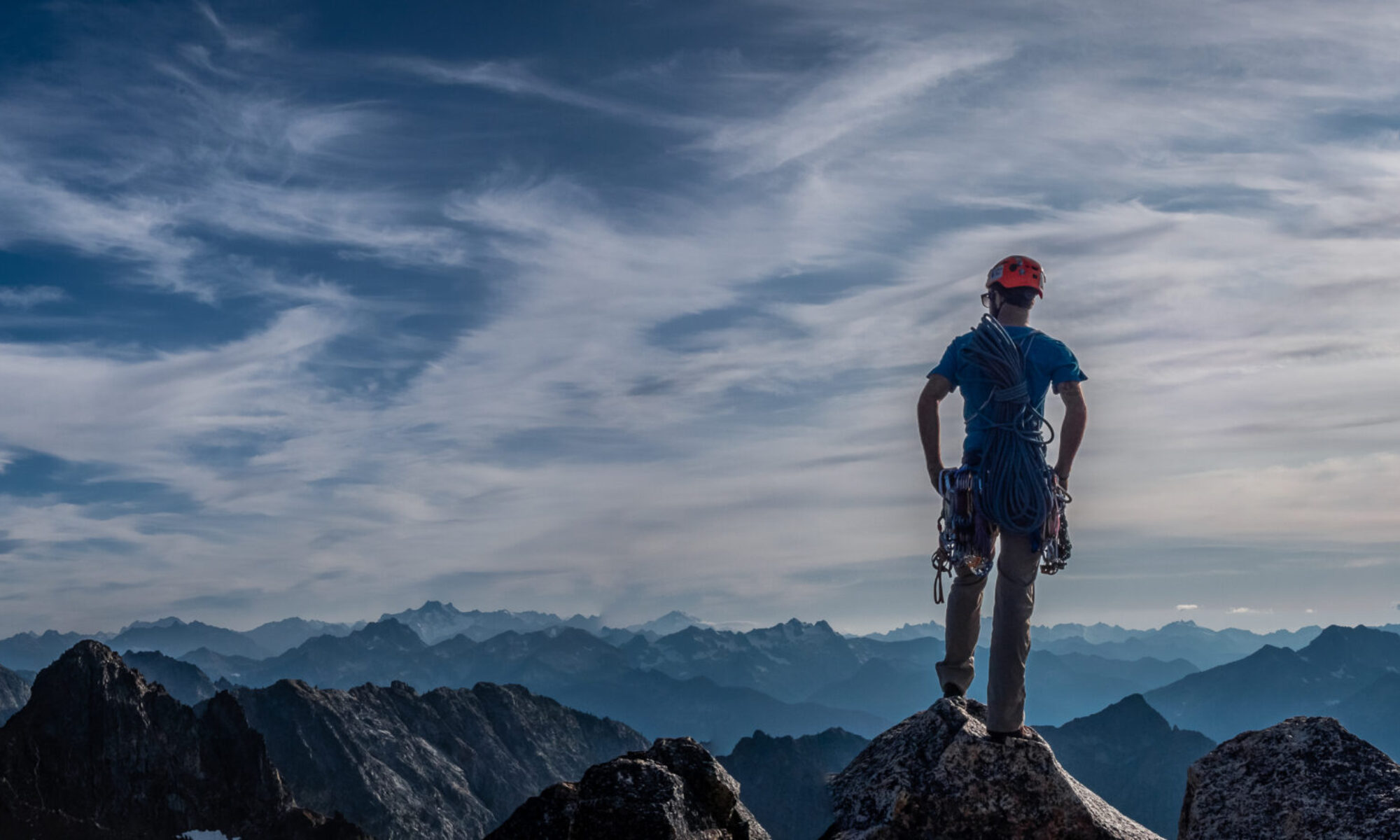[From the May 2012 Mazama Bulletin]
Reviewer: Bill Larson
I’m sure that the first thought through the heads of many Mazamas might go a little something like this: “What in the world does bouldering have to do with my epic adventures in real mountains?” Well, after reading this book it has become clear that the movement skills and some of the techniques involved with bouldering have a great deal to do with better mountaineering. To quote a line from the book “small hills lead to big mountains.”
It seems that although much has been written about climbing precious little has been written about how climbers should move while they are on the rock. Sure, the definition of hand positions and methods of using equipment to improve safety has been covered ad nauseam but the role of the climbers in manipulating their center of gravity has been neglected in the literature. The subtitle of the book explicitly references movement as one of the core topics and in this way it somewhat fills the gap offered by so many other instructional books. Unfortunately, the amount of text used to describe movement comes up a bit short on the promises of the book’s title and is relegated to a few pages once you get the definition of hand and foot positions out of the way. Despite this, what the author writes in those pages is no less valuable in the very basic sense that not many other climbing books even touch the subject more than vague admonishments to “use your feet.” The author’s abbreviated consideration of the topic of the mental side of climbing really hasn’t been explored much anywhere else and that was nice to see as well.
On the second topic, tactics, the author does an admirable job covering the tactics used by many leading climbers, some of which may be useful to climbers of other disciplines. One such area is the discussion of the role of temperature and seasonality on friction, which is something trad and sport climbers could get a lot of value out of when climbing their projects. Conversely, those reading the book that are not interested in bouldering will want to skip the substantial amount of pages dealing with falling and spotting.
The third topic, problem solving, is really only a vague discussion interspersed throughout the book. There were certainly nuggets of wisdom to be gleaned but the author didn’t focus his attention on the subject nearly to the extent that problem solving deserves a place on the cover.
One of the real places where Bouldering shines is through the admission of perspectives from other climbers. Throughout the book the author interviews many of the top athletes of our sport to ask them the how’s and why’s of their bouldering. I came to appreciate the insight into climbing they provided and found their words motivating at times. The forward by Dave Graham is really one of the highlights of the entire book and made me want to get out there for myself.
The book also contains a few other nice surprises that I’ve yet to see much anywhere else. I don’t personally have children but I imagine that if I did the section on climbing with kids would have been most welcome. The section on training and injury protection was surprisingly thorough for a book this broad in scope. The same goes for the section on climbing competition. I have no doubt that considerable value would be derived by competitors looking to up their game.
Overall, this is a valuable book to add to the library of climbers of many disciplines. None of it is particularly thorough but it covers a surprising number of subjects fairly well where few other authors have dared to tread. Even the baddest mountain goats could probably still learn a thing or two that they could use to improve their climbing.
Bouldering: Movement, Tactics, and Problem Solving by Peter Beal.Publisher: The Mountaineers Books


